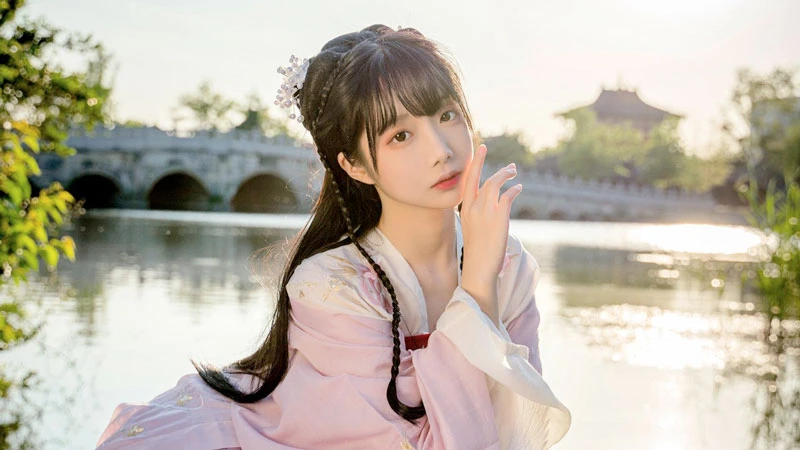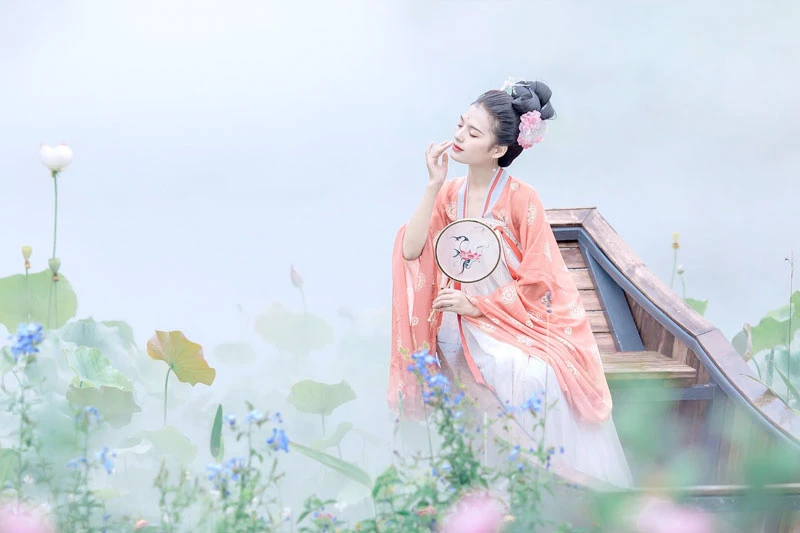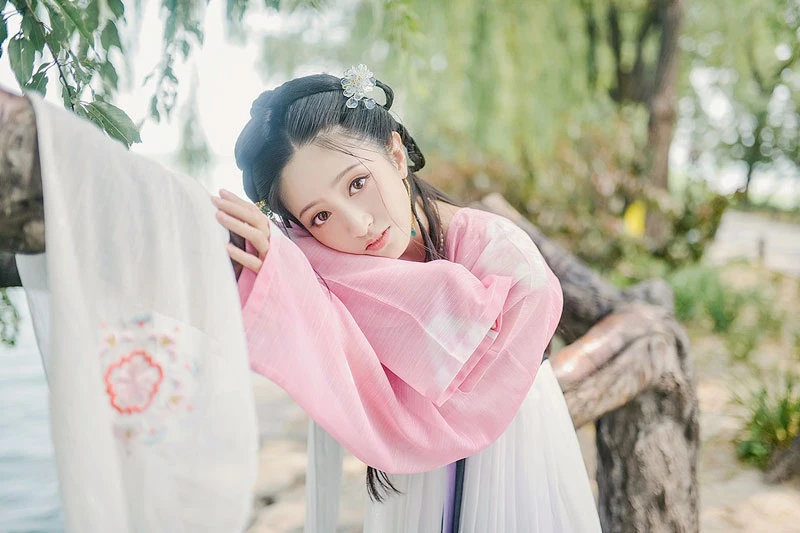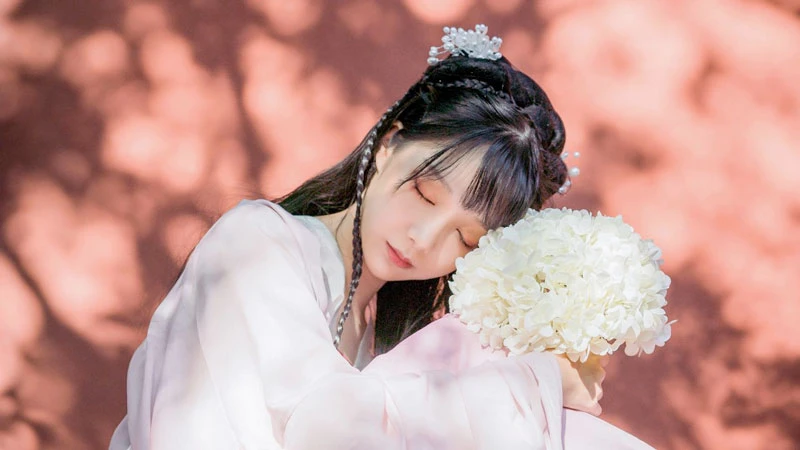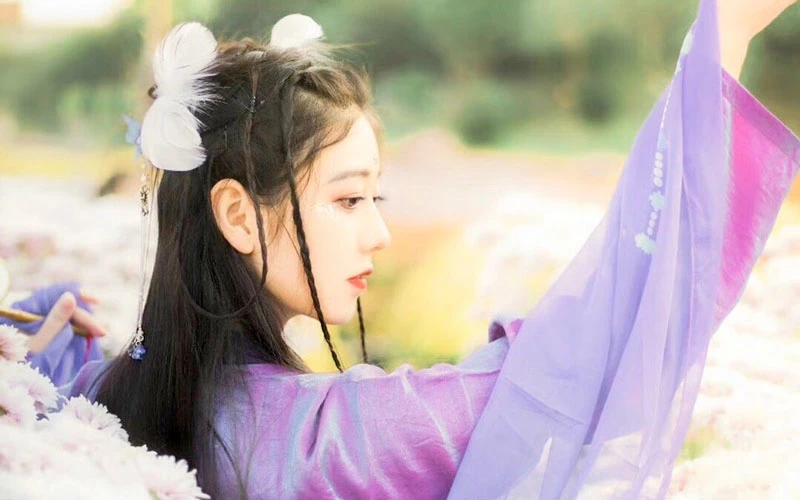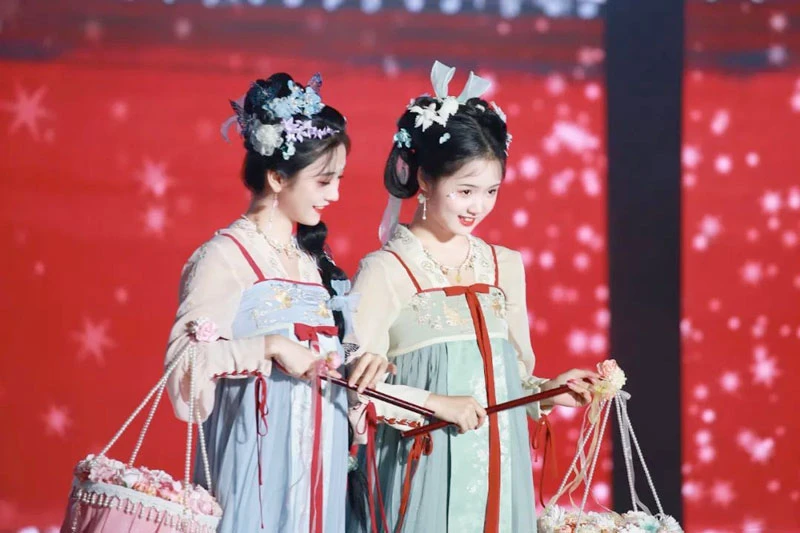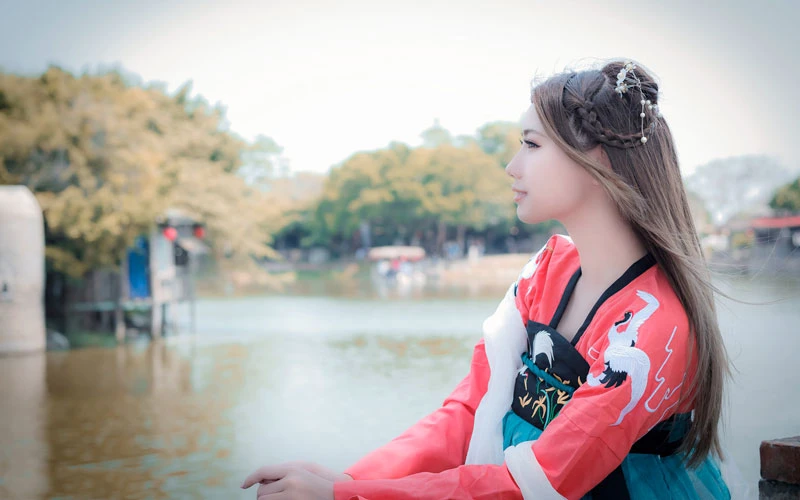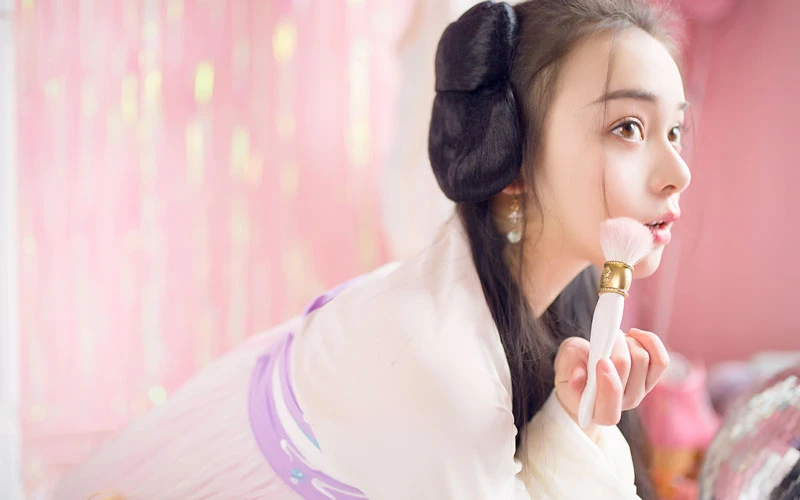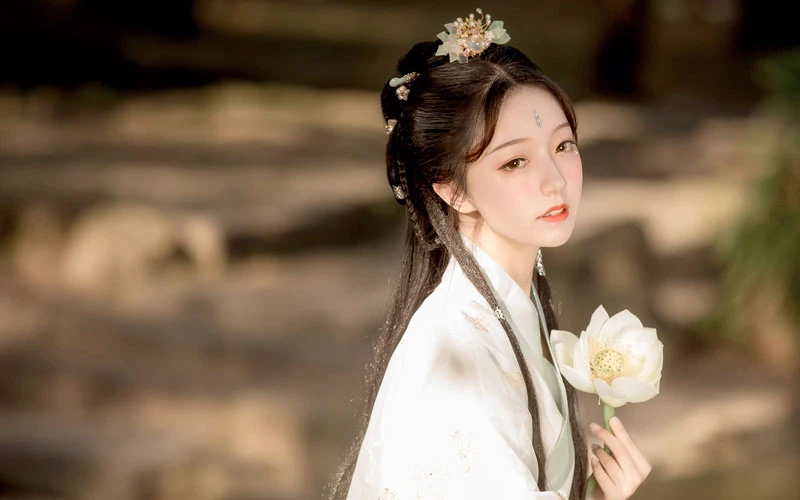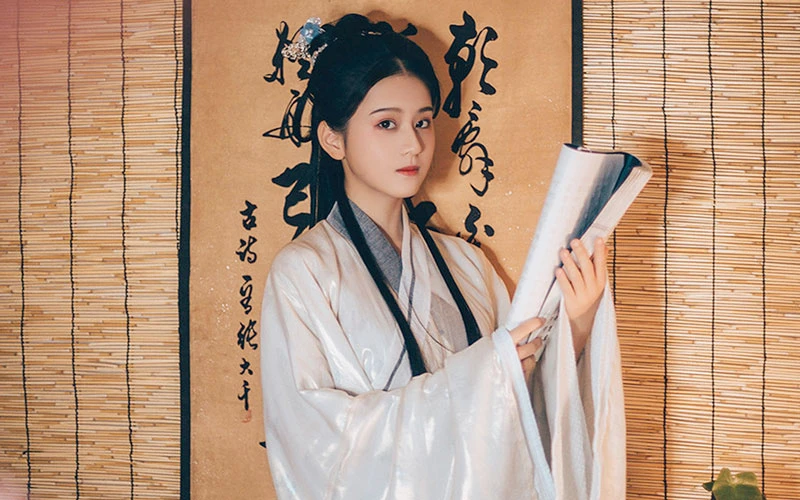China is a multicultural country with many ethnic groups. The Han, who make up more than 90% of the population on the mainland, is the most powerful. The Han people used to have their own distinct way of life, which included how they dressed. Hanfu, or Han clothes, is the name given to the sort of clothing they wear.
The Han people’s traditional clothing system is now separated into two phases: ancient and modern. Hanfu was founded over 4,000 years ago, during the reign of the Yellow Emperor. It had been evolving until the Qing Dynasty’s policy on hair and dress code intervened around 300 or 400 years ago.
Types of Hanfu Dresses
Different types of Hanfu are worn by young Chinese people. Ping is a word that implies “flat.” One of the most distinguishing features of Hanfu is that it lacks shoulder lines, implying that the costume is made up of only one simple cloth cut.
Zhong is a Chinese word that implies centered. The guideline of symmetrical tailoring and stitching is followed in the cutting and tailoring. Jiao refers to the elements of Hanfu being created to cross and overlap, preserving a traditional Chinese belief in the Yin-Yang equilibrium. Everything must go to the right, including how the front is closed because the word “you” is stressed.
Kuan, which means wide, is the fifth. The upper sleeves and bottom of Hanfu garments are loose-fitting. It reminds the user to move gracefully and with decorum in mind. The edges and sleeves are referred to by Tuan and He. The edges must be smooth and free of dangling threads, and the sleeves must come together and meet. The ornamentation comes last, but not least. A band is used to hold all of the parts together instead of buttons. That’s how a modern Hanfu ensemble is put together.
The Development of Hanfu
During the Xia (21st BC – 16th Century BC), Shang (17th – 11th Century BC), and Zhou Dynasties (11th Century BC – 256 BC), the earliest Hanfu form emerged. The dressing system was increasingly developed throughout the Western Zhou Dynasty, and a dressing system focused on the “Tianzi Mianfu” (the emperor wears Mianfu) was formed.
Shenyi was also created at the same time. The dressing system was later reorganized and featured new styles under the Qin (221–206 BC) and Han (202 BC — 220 AD) Dynasties. The crown was created as the primary symbol of social status. Men wore a tiny black kerchief to hide their hair in the Tang Dynasty (618–907), while ladies wore high-waisted dresses.
Military clothes were embellished with buttons after the Tang Dynasty. Hanfu became extinct with the start of the Qing Dynasty (1644–1911) when the Manchus seized power and outlawed traditional Hanfu. After that, the western fashion style became fashionable in China, and people stopped wearing Hanfu.
Hanfu in Modern Times
Hanfu, which literally means ‘Han garments,’ is a form of traditional Chinese attire. It was forbidden at the start of the Qing Dynasty (1644–1912) after serving as the traditional dress of the Han ethnic group for more than three millennia.
People coined the name “Hanfu” to characterize the Han people’s clothes during the Han Dynasty (206 BC – 220 AD) in recent years. It does, however, relate to the Han people’s historical attire prior to the Qing Dynasty, when the Manchus ruled. When most people think of Hanfu, they think of a long flowing robe with loose sleeves and a waist belt. Hanfu, on the other hand, is a broad phrase that encompasses a wide range of concepts.
What type of clothing is Hanfu?
Hanfu is traditionally made up of an outer garment, such as a hanfu robe or a jacket, and a lower garment, such as a skirt. During China’s five thousand years of history and culture, there have been many different types of clothes in the traditional Chinese dress system.
The Hanfu, a traditional Chinese garment worn by the Han people, is the most important and commonly worn (the predominant ethnic group of China). Hanfu, centered on Chinese etiquette culture, has formed unique features and characteristics of the Han nationality through a natural evolution from Emperor Huang’s reign to the middle of the 17th century (the late Ming Dynasty and early Qing Dynasty), which is obviously different from the traditional Chinese clothing and accessory system of other nationalities.
What is the main feature of a Hanfu style dress?
The right side of the Hanfu is wrapped over before the left, which is known as the right lapel, or “[yu rèn]” in Chinese. The cross collar is formed when the skirts on the left and right sides cross over the chest. The symmetry of traditional culture is represented by the two straight lines intersecting in the center of the garment, indicating a distinct feeling of integrity, which signifies a man’s impartiality.
The lines of Hanfu are delicate and graceful due to the wide sleeves. Another distinctive aspect of Hanfu is the use of a sash instead of buttons for tying. Hanfu does not use buttons in general. Even if buttons are useful, they are always concealed within the garment and never visible. To tie the clothes, it is commonly done with a knot. On Hanfu, there are several motifs with auspicious meanings. At the same time, people choose different patterns for different situations.
What is Hanfu made out of?
Hanfu is made up of three elements: style, color, and material. The most fundamental element is material. Clothing materials encompass all of the materials that go into making clothing, which is separated into two categories: clothing fabrics and clothing accessories. This article mostly focuses on Hanfu fabric expertise.
When selecting fabric, we should examine the Hanfu’s style as well as what section of the garment the cloth will be utilized for (such as body, collar edge, belt, etc.). Hanfu’s style is rather consistent, and fabric selection has a significant impact on the style and temperament of apparel.
What are Commonly used Hanfu Fabrics?
1. Fabric made of silk
Brocade, gauze, yarn, spinning, and other silk materials are high-end textiles with a high price tag. In both ancient and modern times, they are associated with high-quality materials. Mulberry silk, tussah silk, man-made silk, and synthetic fiber filament are the most common raw materials used in these garments. Silk fabrics are known for their moisture absorption and air permeability, as well as their lightness, softness, smoothness, elegance, beauty, and comfort. The drawback is that it is difficult to master when it comes to producing and caring for.
Silk textiles require special attention.
- The best method of cleaning is dry cleaning.
- Gently hand washes with silk wool special detergent in cold water. After washing, hang the garments to dry. Avoid twisting or exposing yourself to the sun.
- Avoid contact with acid substances; otherwise, the silk fabric will deteriorate and be destroyed.
2. Fabric made of line
Flax, ramie, and other ramie fabrics are the most common. Hemp-type fabrics include both pure hemp fiber fabrics and fabrics combined with other fibers. Hemp-type fabrics are separated into two categories: pure spinning and blended spinning. Strong texture, bright and clean look, smooth handle, good draping, rough and stiff, cool and comfortable, and good moisture absorption are all prevalent qualities of linen materials.
The drawback is that it wrinkles easily. Although Ma Mian is inexpensive, it has a noble aspect and is easy to wear. It’s a fantastic Hanfu cloth. The fine and fine hemp flour material are appropriate for manufacturing Ru skirts in the summer; the thick hemp flour material is appropriate for autumn and winter coats, and the temperament tends to be men’s clothes.
Linen fabric needs special attention.
- Because hemp fabric shrinks by roughly 7%, the purchased fabric must be soaked in water, pre-shrunk, and then sewed to avoid ill-fitting garments.
- When washing, use a neutral soap or detergent. Hemp cloth wrinkles easily and requires ironing at a high temperature after washing. It is preferable to hang it for the sake of preservation.
3. Fabric made of cotton
Cotton was imported from overseas in the late Song Dynasty and was first utilized in the late Song Dynasty. Cotton yarn or cotton and cotton type chemical fiber blended yarn is used to weave this fabric. Pure cotton items and cotton blended products are two different categories.
Cotton has a more affine appearance and texture, as well as good hygroscopicity, air permeability, and warmth retention. Large shrinkage, low acid resistance, ease to fold, ease of mold, and cannot be exposed to long-term sunshine are some of the downsides.
Cotton fabric maintenance
- Cotton cloth shrinks between 5% and 7% and must be soaked in water before sewing.
- Soap, washing powder, and neutral detergent are used in the washing process. To avoid dying, various colored clothes should be washed separately.
- Because cotton materials are susceptible to mildew, they should be stored only after they have been completely dried.
4. Fabric made of wool
Wool, rabbit hair, camel hair, and wool type chemical fiber are the main raw materials used to make wool type fabric. The primary material is wool. Wool fabric is a high-quality garment fabric that may be used all year. It is distinguished by its elegance, warmth, and air permeability, which consumers appreciate.
Conclusion
We’ve taken a more in-depth look at Hanfu dresses, including their cultural significance and importance in the Chinese tradition. These dresses have taken a modern turn and are now seen as being at the top of the trend in today’s fashion world.

